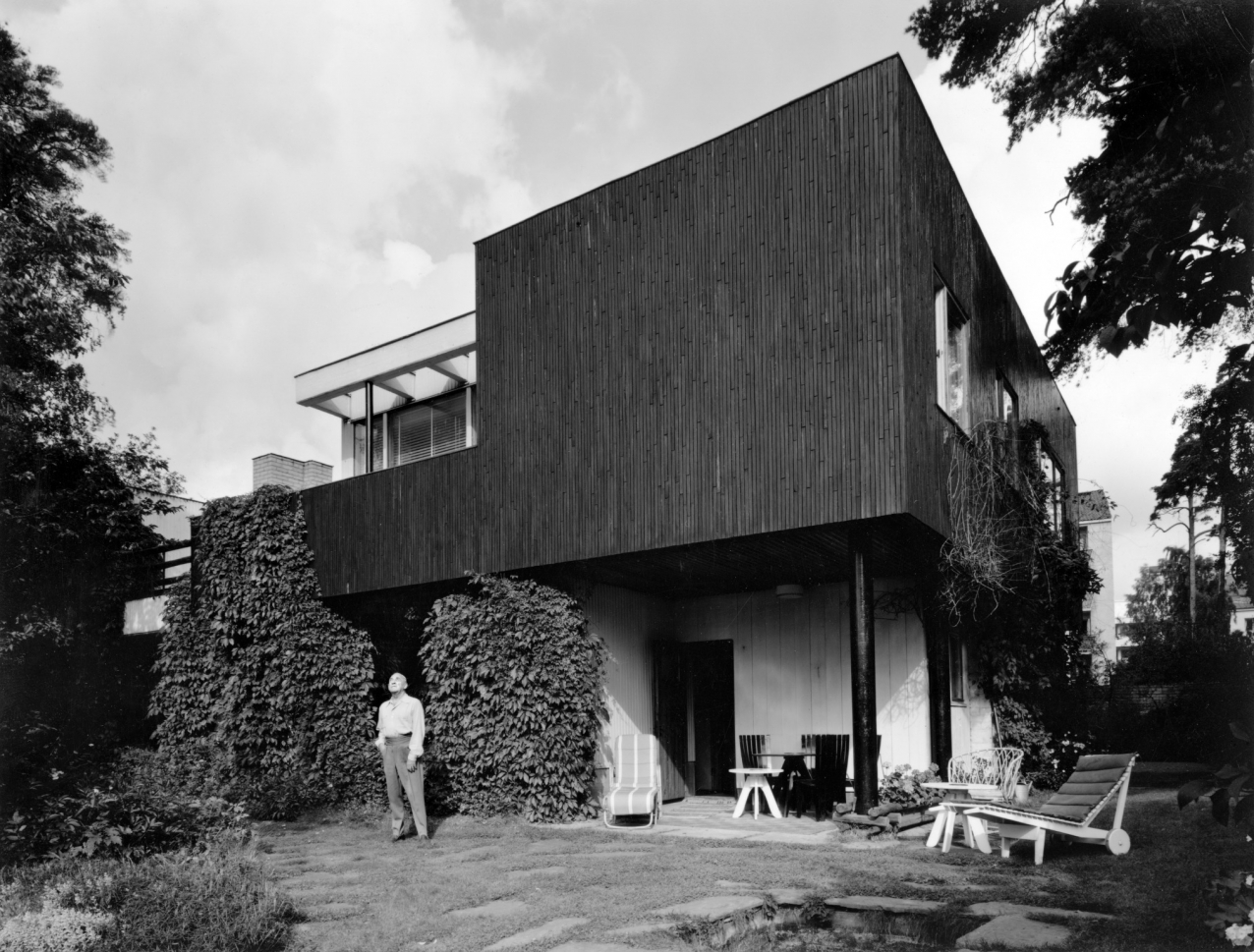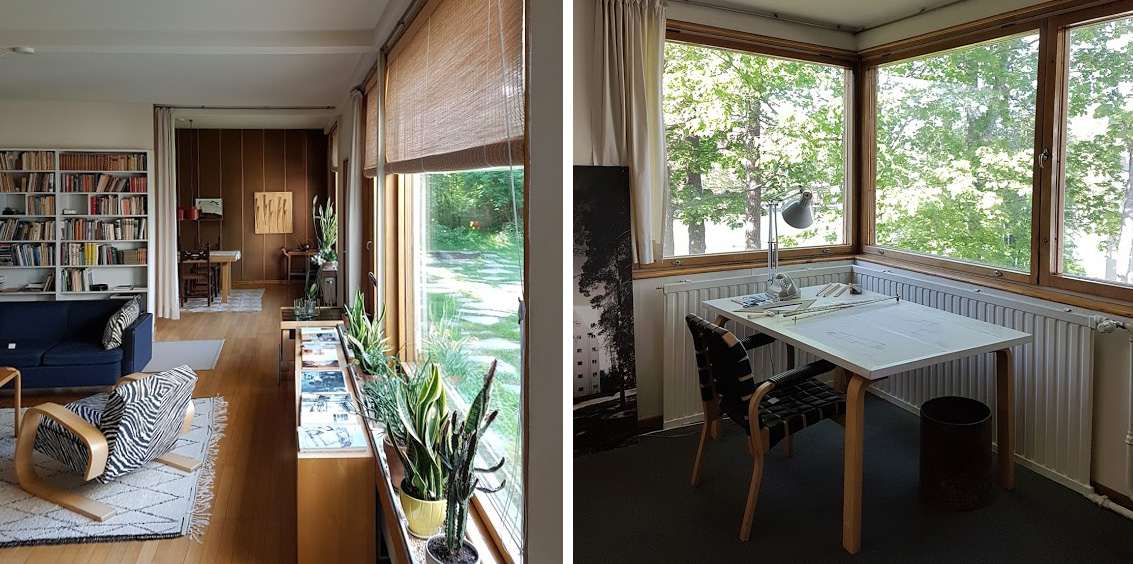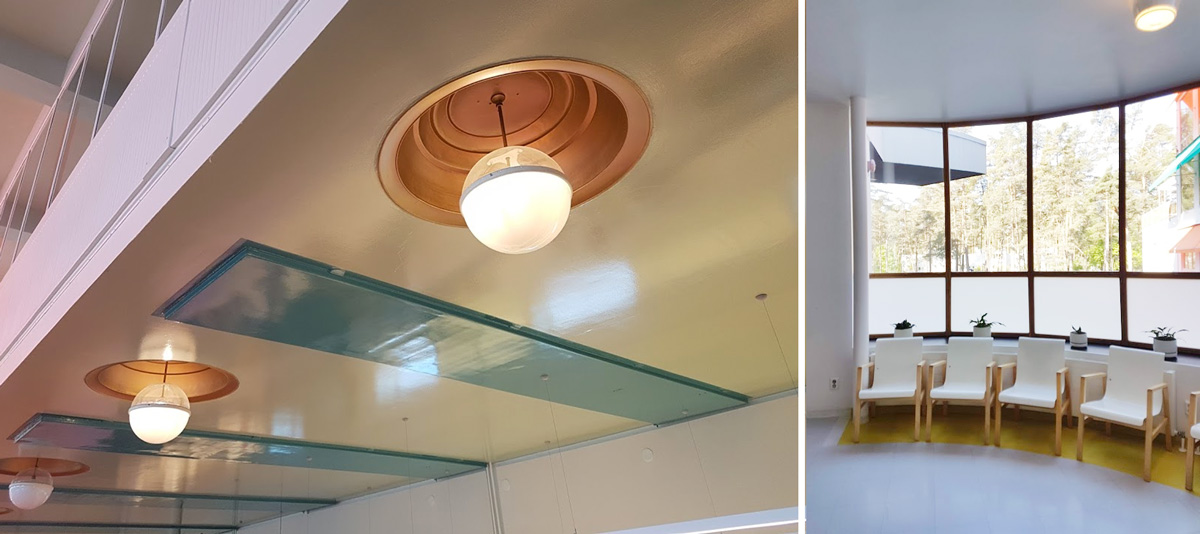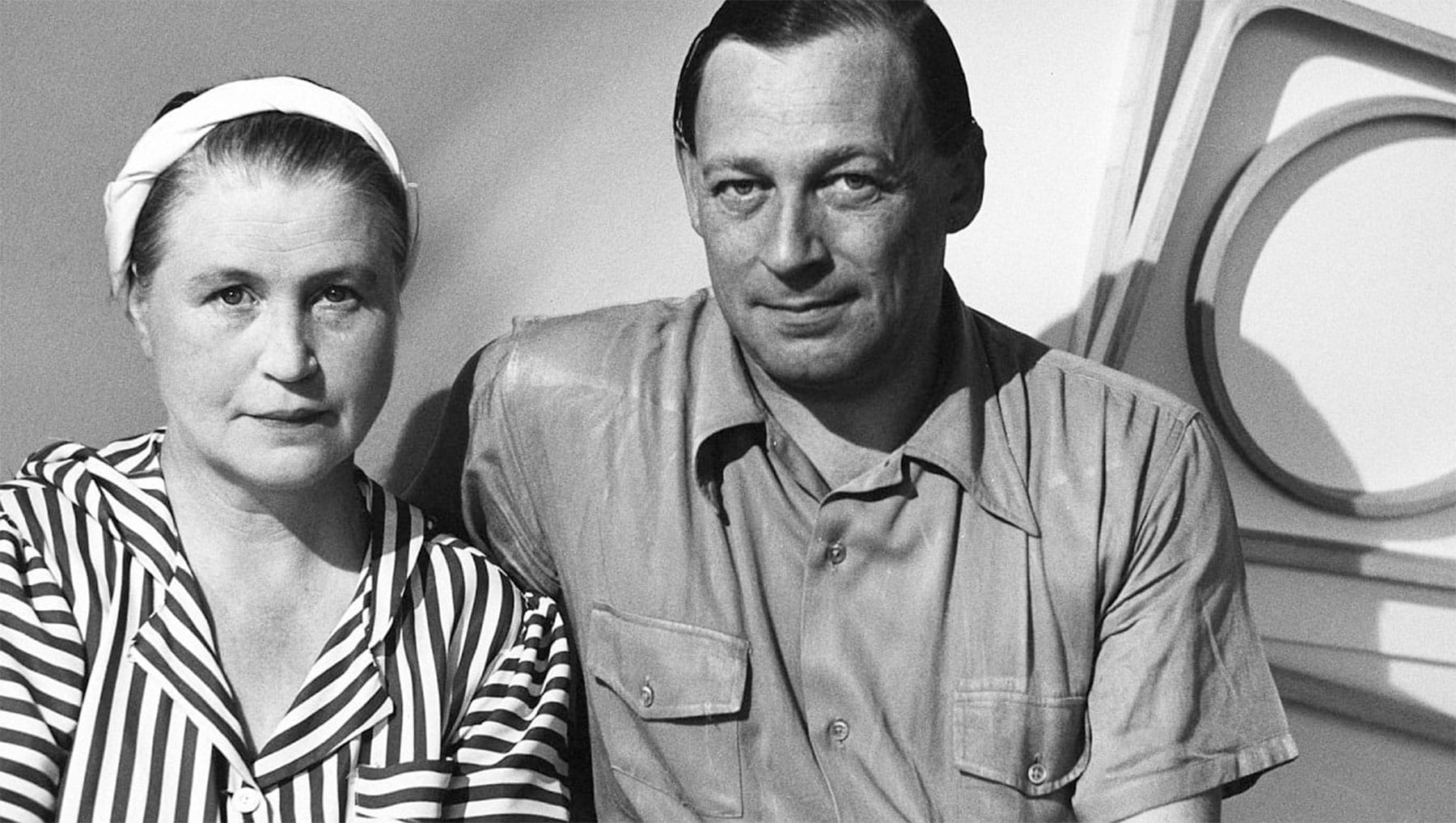
At the invitation of the Finnish design company Artek we recently left Vancouver behind and headed to Helsinki to experience the architecture and history of one of Artek’s founders — Alvar Aalto.
The visit began at the original 1935 Aalto House — the home and office designed by Alvar and his wife Aino. This is a humble and private structure that can easily be missed. Once inside, one can see that the main focal point of the home is its Southern facing side which opens itself up to the sunlight, a key theme in Aalto’s work.

The rooms, each defined with purpose, are segmented but flow into each other with ease; walking from the simple reception area up to the double height office area and back down to the parlour. Space is punctuated throughout by the thoughtful use levels and materials.

Personal selections by the Aaltos such as ornate Italian chairs work well in contrast to the more commonly recognized and minimal dining table with bentwood legs. Although Aino Aalto passed away in 1949, Alvar’s second wife Elissa did little to change the home as it was first designed thus maintaining the integrity of the home’s architecture and interiors. Alvar Aalto used this as his office until the completion of a larger dedicated studio space a short walk away in 1955.

From this new studio, Alvar Aalto continued to expand his architectural practice with commissions from across Europe. Much like his home, the street presence of this building is subtle.

The building again is filled with an abundance of natural light and is centred around an outdoor amphitheatre with a large white backdrop for slideshow presentations. Alvar’s own office curves around the back of this central outdoor space and served as the viewing point for the theatre during colder months. This space is now home to the Alvar Aalto Foundation preserving the founders existing architectural works.

A two-hour drive from the heart of Helsinki took us to one of Alvar Aalto’s seminal works — the Paimio Sanatorium. Having won the competition for the design of the sanatorium in 1929, Aalto was lauded for his holistic approach to the structure. From small architectural details like rounded edges for easy cleaning to the positioning of auxiliary spaces to reduce travel distances for the ill, all aspects of how the spaces were to be used were considered in the design.

Notably, the use of colour to enhance mood was a defining feature of the building. Aalto worked with the artist Eino Kauria to specify these ideas — bright yellow hallways to lift the spirit, green ceilings in the breathing room to echo the feeling of the sanatorium’s wooded surroundings.

For Aalto, Paimio was where his experimentation in wood bending techniques was developed. Together with furniture manufacturer Otto Korhonen, Aalto established a unique vernacular with his furniture partly guided by the needs of the sanatorium to have warm natural materials and curved forms.

With a catalogue of products now designed, Alvar and Aino Aalto, in collaboration with art historian Nils-Gustav Hahl and artist Maire Gullichsen, founded the forward-thinking company Artek to export their works and import new ideas into Finland.

Following the Paimo Sanatorium was a visit to the Artek factory in Turku, Finland where for more than 80 years Artek designs have been produced. As is with most factories focussed on working with wood, the first sight is the stacks upon stacks of lumber. In this case, Finnish birch that is responsibly sourced from mixed wood forests during late autumn to ensure the wood contains minimal sap. The wood is sorted and cut into blanks to be used in a variety of products. All burnable waste is kept on site to be used in the factory furnace during the winter season.
While many of the products are now bent in moulds, some designs require the forms to be bent by craftsmen. Artek’s A-Factory as it is called specializes in the wood bending pioneered by Alvar and Aino Aalto. Piles of the iconic L shaped legs and other parts can be seen ready to be assembled throughout the factory.

This immersive view into the architecture and history of the Aaltos and Artek instilled a deeper appreciation of the innovative spirit Alvar, Aino, and their collaborators had. Their exploration into the materiality of wood and into woodworking techniques has undoubtedly made a lasting mark in the development of contemporary furniture design.